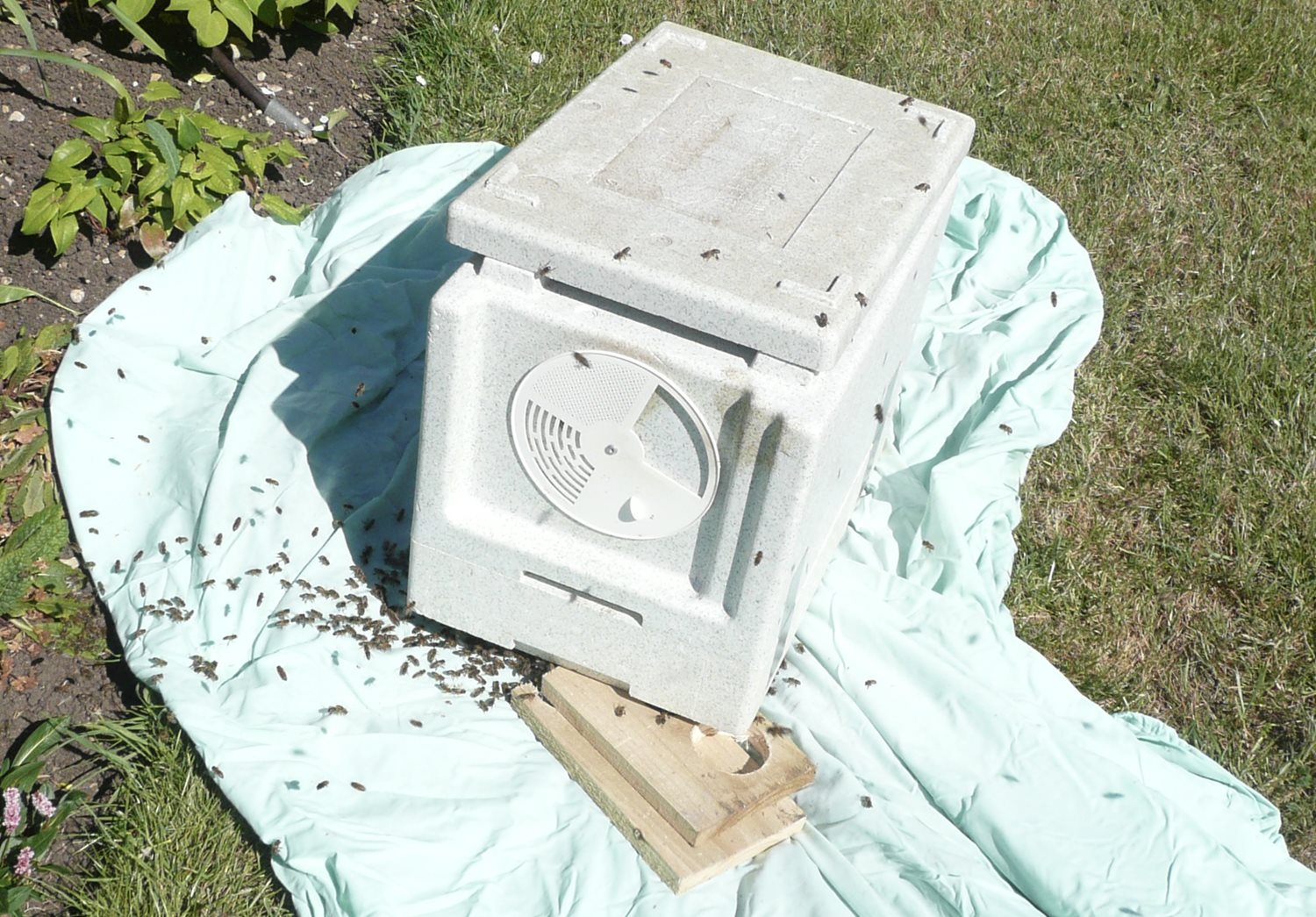Bee Blog - June 2020
This month's update from local beekeeper Gerald Bushby
Approaching the middle of the month I was beginning to think that I would have little to write about in my June Blog. As I had recorded in May all three of my hives had been very active taking advantage of the unusually warm and settled Spring weather. All hives had two supers for honey storage and they were filling nicely and being capped.
I carried out my weekly check of the hives on Saturday the 16th looking especially for swarm cells as its that time of year. Theory has it that one year old queens have a low tendency to swarm and I saw on my inspection that all hives still had plenty of space for the increasing numbers of bees. I had reached the last hive checking each frame and had seen no evidence of swarm cells at all. I reached frame 7 of the 10 frames in the last hive still finding nothing so I assumed that there were none and didn’t check the last three frames. Big mistake.
At about 10.00am the next day, Sunday, I was walking towards my hives when I heard a loud buzzing. I could tell just from the noise that the bees were swarming. Bees often make a buzzing noise in and around their hives but the noise of a swarm is altogether different, it is persistent and very much louder. As my hives came into sight I could see bees pouring out of the last hive I had not completely checked the day before. They were off.
My first thoughts were that the other two hives were at a similar state of development as the hive that had just swarmed. If I did nothing they would swarm as well. I decided that I had to split the two remaining hives and remove the queen, the bees cannot swarm if they do not have a queen. I also thought that this would be a good opportunity to carry out some queen rearing as I had planned to do last year before I was stung and had my allergic reaction.
I keep a store of nucleus boxes (half sized hives) for making splits. I opened up each of the two hives in turn and looked for and found each queen, marked green, quite easily. This is when having marked the queens early in the season pays off. It is not at all easy spotting an unmarked queen in a hive of 50000 bees. I placed each queen along with a frame of brood and a frame of food into their own nucleus box filling up with empty frames.
I caught one of the queens and paced her in my queen rearing box, a device for harvesting some of the queens eggs. She would need to be in this box so that I could harvest eggs, not more that 3 days old, which I could then place back into one of the queen less hives to develop into queen cells and new virgin queens.
At this stage I had two queen less hives and the swarmed hive which hopefully has a virgin queen in occupation. I looked into the swarmed hive and was surprised to see that it still had a very large number of bees in it so perhaps the swarm was not as large as I had feared.
In the next few days I kept a close eye on the hives and things settled down. The two colonies where I had removed the queens could not swarm as they did not have a queen and the swarmed colony was now smaller and seemed content.
As I walked near my hives I kept thinking that I could hear a buzzing from a large nearby tree but I could not see flying bees and I kept wondering if my swarm hadn’t flown far away. If it was my swarm they were way too high in the tree for me to do anything with them.
The following Wednesday my wife and I were in another part of our garden when she called out for me to come to her. A swarm of bees was settling in a small apple tree near her. I new these couldn’t be from my two hives without queens so I assumed it was probable my Sunday swarm moving and looking for a better home. They could not have settled in a more convenient position, easily accessible and about 4 feet above ground level. I fetched a nucleus box, held it under the swarm and shook the branch on which they were hanging and they fell in. I turned the box upside down on a sheet, propped it up and waited for the bees to walk in, my photograph this month. In the evening I moved them into the apiary turned the box right ways up and inserted some frames for them to build a colony.
On the Saturday evening I was having a drink outside my sitting room thinking that a lot can happen in a week. I started the week with three active colonies each with their own marked green queens and I finished the week with three queen less colonies and three nucleus colonies each with a queen. Then a bee stung me. Oops, not a good idea.
